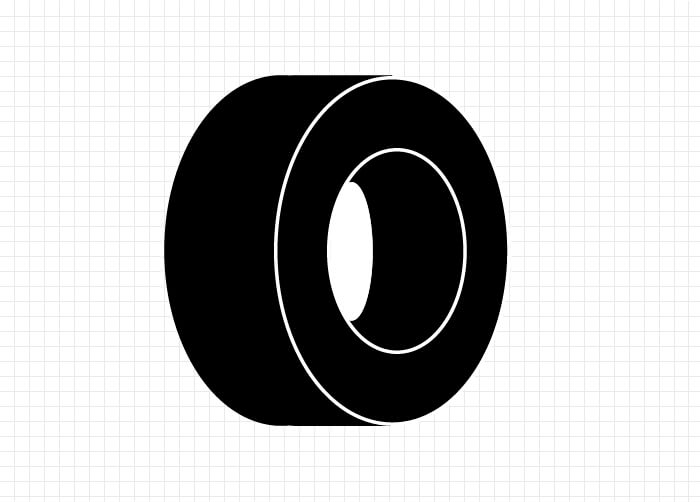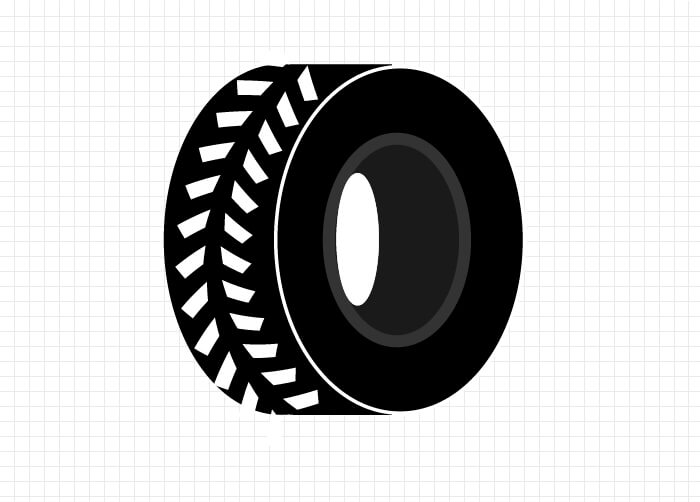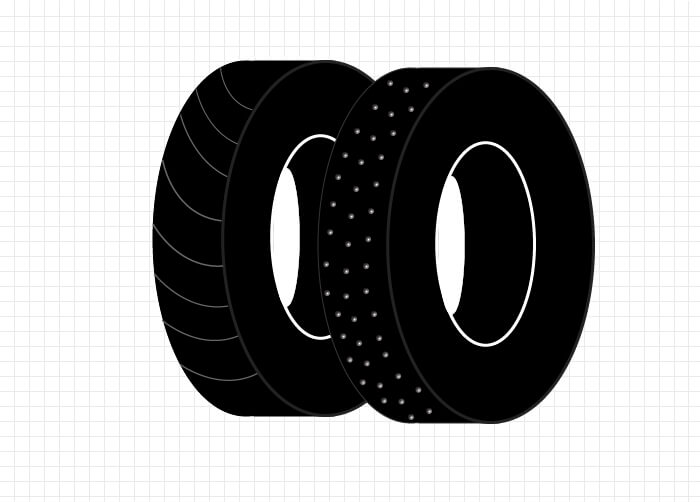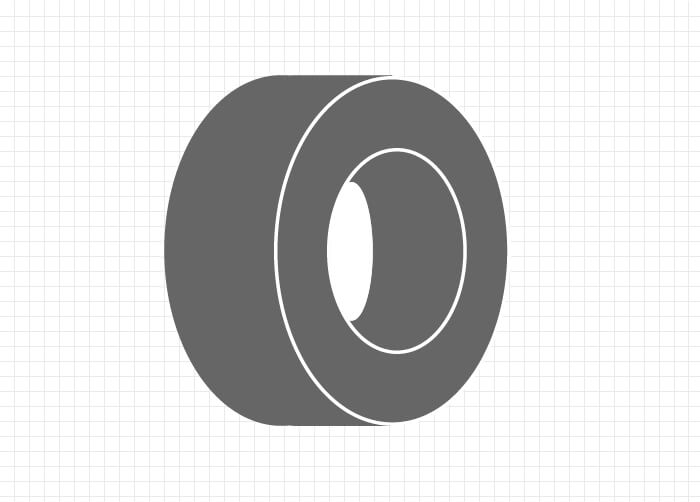Our comprehensive forklift tire guide – compiled by our tire specialists – will help you keep your forklift productive. It all starts with the tires.
We’ll cover everything from understanding basic tire types to getting the maximum life out of your tires. If you’re looking for cost-reduction recommendations, we have that, too.
Let’s get started! Click below to skip ahead:
1. FORKLIFT TIRES TYPES
Chances are, you've dealt with forklift tires before. But if you're new to forklifts, or just want to learn more about different types of forklift tires, you're in the right place.
There are several different types of forklift tires. Each has their own benefits, each is suited to different work environments and, usually, your forklift is designed with a specific tire in mind.
Here’s a quick video overview:
For more in-depth information on the basic characteristics of forklift tires, keep reading!
CUSHION/PRESS-ON TIRES
Cushion tires (also known as press-on tires) are made of solid rubber molded to a steel band. The rubber can either be traction or smooth. These tires are very durable and are best suited for indoor or light outdoor use on smooth surfaces.
PNEUMATIC TIRES
Pneumatic tires are similar to a car tire. They are made of traction rubber and filled with compressed air. Some companies fill their pneumatic tires with foam to avoid the upfront cost of solid pneumatic tires.
Although less costly, we don't recommend filling pneumatic tires with foam because it increases pressure on the casing, making it less sustainable long term. Pneumatic tires are used indoors and outdoors when the work area is free of sharp objects.
SOLID PNEUMATIC FORKLIFT TIRES
Solid pneumatic forklift tires are made out of solid rubber. These tires are very durable and can’t be punctured or deflated, which makes them ideal for industries with sharp debris like recycling centers or lumberyards.
Read: What Are Pneumatic Tires and Why are They Used For Outdoor Applications
POLYURETHANE TIRES
Polyurethane tires, a type of press-on tire, are lightweight and more resistant to splitting, tearing or chunking out under a load than rubber tires. They combine good traction with low-rolling resistance. Polyurethane tires generally experience about twice the lifespan of rubber tires and should be used indoors only for light applications like warehousing.
These tires will wear more easily in a heavy usage indoor environment so consider cushion tires if your application requires high usage.
NON-MARKING FORKLIFT TIRES
Non-marking tires are made with hydrated silicas and special additives for eliminating black marks on floors. They are available for pneumatic, solid pneumatic and cushion tires. These tires have a short life span and are prone to cause static electricity, which means they require an anti-static strip on the forklift.
2. FORKLIFT TIRE COMPARISON CHARTS
Each forklift tire type has their own benefits and drawbacks. Maybe you're wondering which is better: cushion vs. pneumatic tires. Well, that'll hinge on how you're using your forklift.
The ideal tire for you depends on where you'll be using the forklift, how long you need the tires to last, and what you're willing to pay.
See the tire comparison charts below to get a snapshot of the advantages and disadvantages of each tire type.
PNEUMATIC VS. SOLID PNEUMATIC TIRES
| TIRE TYPE | INDOOR | LIGHT OUTDOOR | ROUGH-TERRAIN OUTDOOR | DEBRIS IN WORK AREA | LIFESPAN | DURABILITY | COST |
|---|---|---|---|---|---|---|---|
| Pneumatic | ✓ | ✓ | No | No | Medium | Medium | $ |
| Solid Pneumatic | No | No | ✓ | ✓ | Long | High | $$ |
CUSHION VS. POLYURETHANE TIRES
|
|
|---|

 ENGLISH
ENGLISH  简体中文
简体中文




